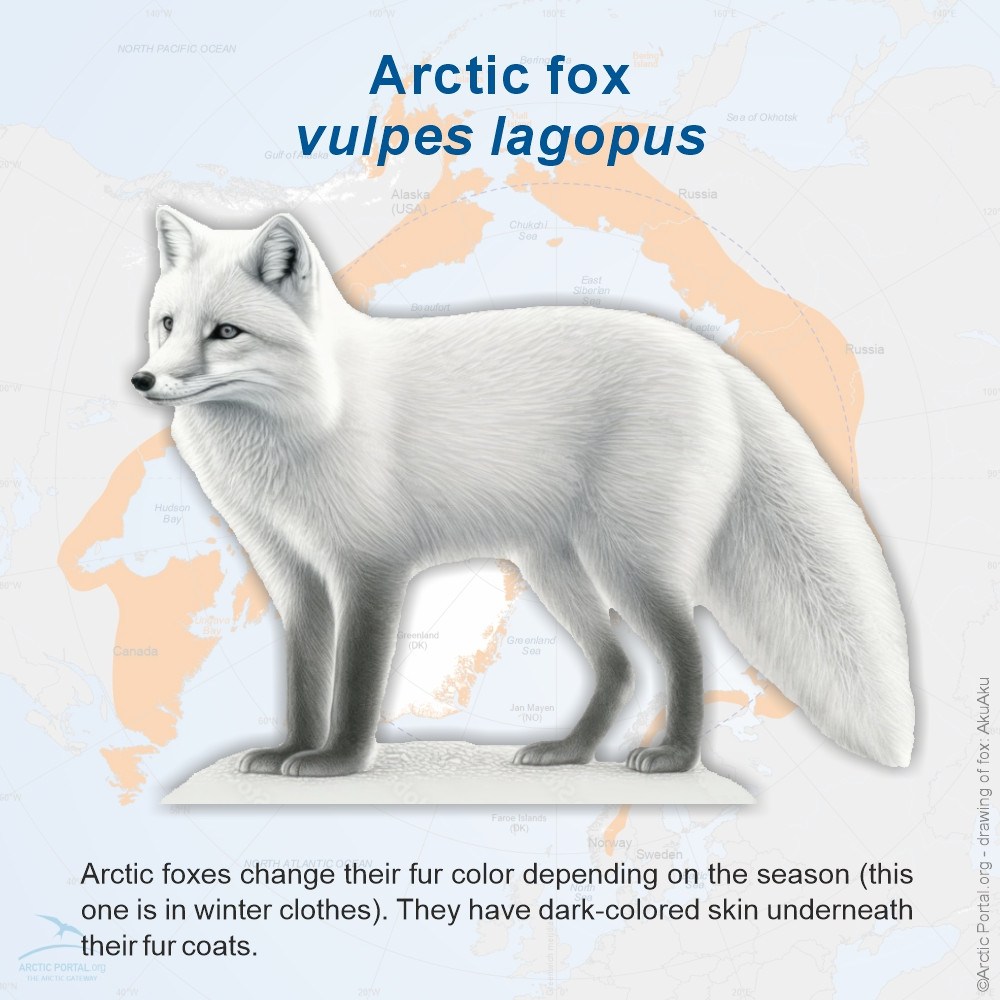Quick Facts
Quick facts give you valuable resources to learn quickly about different things of significance in the Arctic categorized in the following main categories
7 March 2024
Arctic foxes change their fur color depending on the season (this one is in winter clothes). They have dark-colored skin underneath their fur coats.
21 February 2024
Woolly mammoths roamed the cold tundra of Europe, Asia, and North America from about 300,000 years ago up until about 10,000 years ago, apart from the ones surviving longer on Wrangel Island (Russia).
29 January 2024
The polar bear is a white bear inhabiting the Arctic region. With the Kodiak bear (brown bear), it holds the title of the largest and most powerful carnivore on land. It has no natural predators and is unafraid of humans making it an exceptionally dangerous creature.
26 January 2024
These massive creatures have a varied diet that primarily consists of mollusks such as clams, mussels, and snails. They use their specialized tusks to dig through ice and sediments to access their prey.
26 January 2024
Narwhals have no teeth in their mouth, unlike toothed whales. Instead, male narwhals boast a singular elongated tooth, often referred to as a tusk, extending a remarkable two to three meters from the upper left jaw.
26 January 2024
The Great Auk (Pinguinus impennis) was a remarkable species of flightless bird belonging to the alcid family. Native to the North Atlantic region, this penguin-like bird was characterized by its distinctive black and white plumage, with a large white patch on its belly.
26 January 2024
The fin whale is the second-largest whale species and mammal on Earth, behind the blue whale.
26 January 2024
Graceful inhabitants of the Arctic and sub-Arctic oceans, beluga whales are gentle creatures, also know as "sea canaries" due to their melodic vocalizations.
24 January 2024
The Bowhead whale or Greenland right whale thrives in the icy waters of the Arctic and sub-Arctic regions. This marine giant is not a social animal, typically travelling alone or in small pods of up to six.
Arctic Portal.org - 2024 © All rights reserved.
When quoting, reusing or copying any material on the arcticportal.org or any of its sub-sites including but not limiting to: information, news, articles, data, maps or images, in part or in full, a citation stating the origin and a hyperlink to www.arcticportal.org is required.















